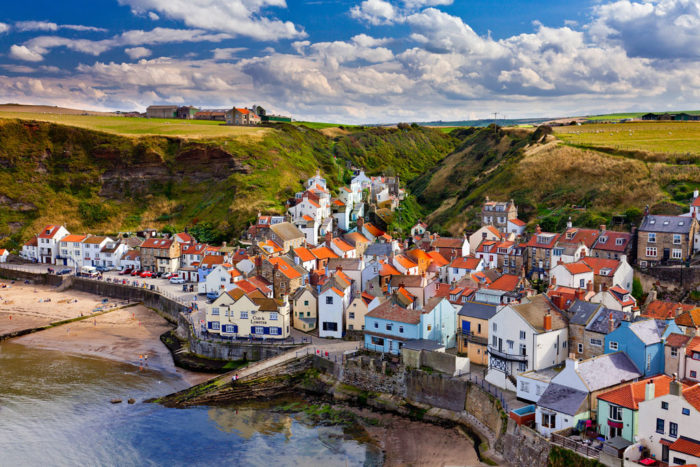Regional guide to the Yorkshire coast
From wild heather moorlands and rugged cliffs to sandy beaches and picture postcard seaside towns, the Yorkshire Coast is as diverse as it is beautiful, as Zara Gaspar discovers.
According to Visit England statistics, more people visit Yorkshire than any other part of the country barring London and it is easy to see why. Yet while the Yorkshire Dales National Park and the literary interest of “Brontë Country” remain definite county highlights, the Yorkshire Coast is equally as enticing.
The coastline of England’s biggest county stretches more than 100 miles from Spurn Point to Saltburn-by-the-Sea, as the landscape changes from the drama of the North York Moors National Park to the beaches of the traditional Victorian seaside towns. In fact, Britain’s first seaside resort was here, kick-starting the nation’s love affair with promenades and piers. The coastline also boasts literary connections to rival those of the Brontë sisters. It was here that Bram Stoker found the atmospheric setting for Dracula, for example, while the area is also associated with the legend of Robin Hood.
There are real life heroes to celebrate here too. Follow in the footsteps of Captain James Cook, Britain’s greatest explorer, who called this part of the world his home, or discover the area’s engineering heritage by visiting the longest steam operated railway in the UK.
WHITBY
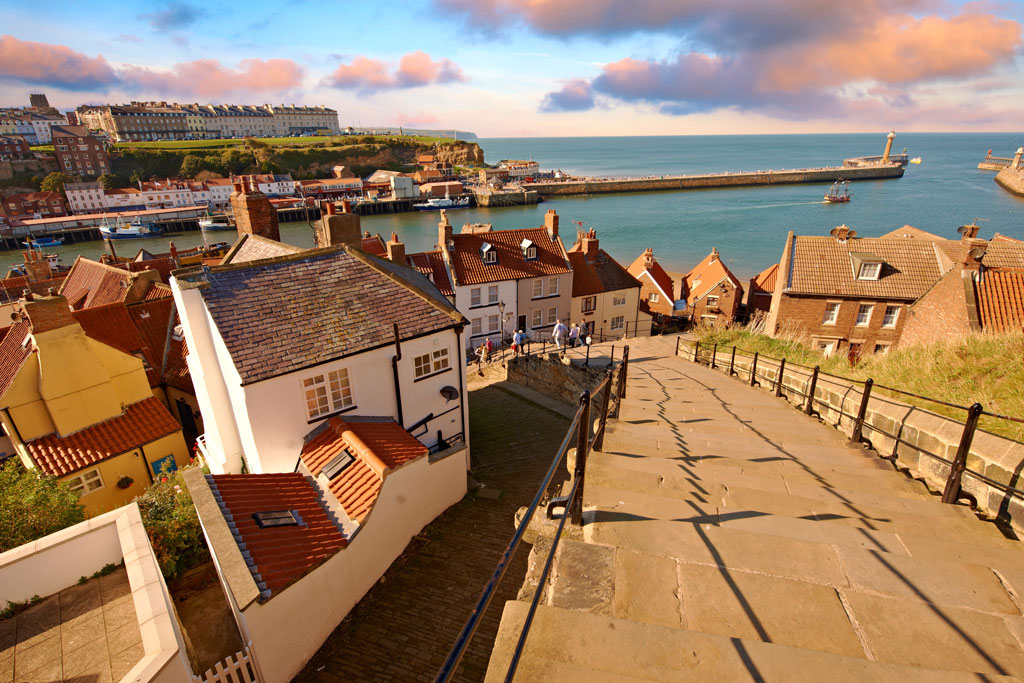
Known as the jewel in the crown of the Yorkshire coast, this picturesque seaport may be small, but it’s rich in history and culture, as well as being renowned for having the world’s best fish and chips – Magpie Café and Quayside are award-winning purveyors of the British delicacy, while Trenchers was named best restaurant at the 2019 Fish & Chip Awards.
The town is divided into two by the River Esk with the Old Town in the east and remnants of a Victorian past in the west. Its most famous landmark, the 1,360-year-old Whitby Abbey, sits on a cliff overlooking the harbour and beaches. The Old Town is made up of narrow, cobbled streets, along which you can still buy Whitby Jet, a local mineral used to make jewellery. From here you can walk up 119 steps to St Mary’s, the church that inspired Bram Stoker’s Dracula, while in the west of the town lies the Captain Cook Museum where the explorer took on an apprenticeship in 1746.
BRIDLINGTON
The setting for the 2016 film adaptation of the classic British TV comedy Dad’s Army, Bridlington is a stunning backdrop with its golden sand beaches and bustling harbour.
In the heart of the medieval old town stands the gothic Priory Church; built in 113AD, it was once one of the greatest monastic medieval buildings. The grade I-listed Bayle Museum focuses on Bridlington’s heritage and holds a treasure trove of artefacts, including the gloves of Charles I’s wife, Queen Henrietta Maria.
Bridlington borders the Flamborough Headland Heritage Coast, a stretch of dramatic chalk cliffs that are home to half a million seabirds and a 17th-century lighthouse at Flamborough Head, the only surviving light tower in England.
Don’t miss Sewerby Hall and Gardens en route, a stunning property dating back to the early Georgian era complete with zoo.
CLEVELAND WAY
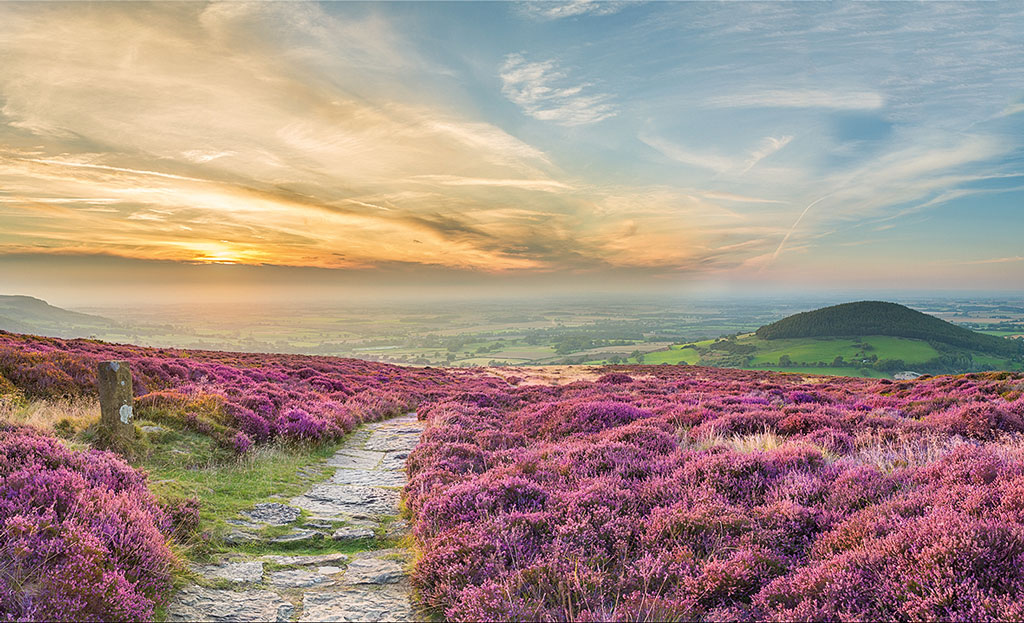
This national trail runs for 109 miles, beginning inland at Helmsley before running up through the heather-filled North York Moors National Park,
and reaching the sea at Saltburn-by-the-Sea.
From here, the trail traverses some of the country’s most beautiful coastline and reaches some of the highest cliffs in England (the highest point of the trail is 1,300 feet above sea level) en route to Filey, one of many pretty little towns and fishing villages along the way – also look out for the red-roofed cottages of Runswick Bay and the sweeping beach of Sandsend.
Highlights along the trail itself include the ruins of one of England’s most powerful Cistercian monasteries, Rievaulx Abbey; the White Horse carved into a hillside near Kilburn; and Captain Cook’s monument, a 60-foot high obelisk that sits on top of one of the highest hills in North Yorkshire.
www.nationaltrail.co.uk/cleveland-way
STAITHES
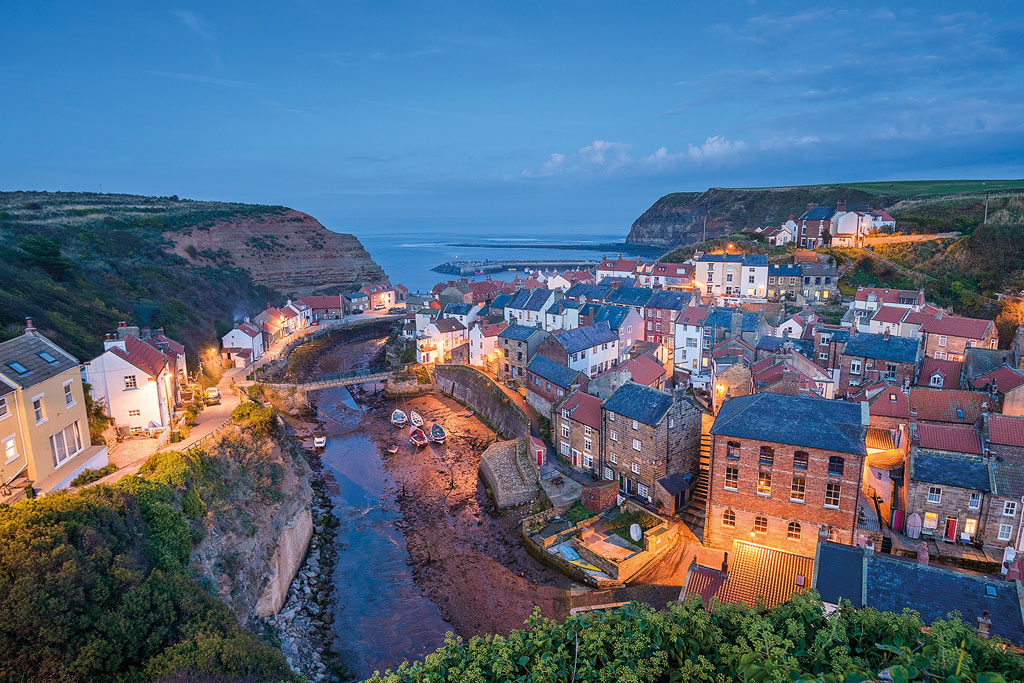
This quaint fishing village with its close-knit cottages and winding streets, is not only famous as the setting for children’s TV show Old Jack’s Boat,
but also as the artist capital of Yorkshire. The beautiful Georgian Staithes Gallery showcases a wonderful selection of contemporary art inspired by the area.
The James Cook Cottage is also located here. The explorer was born in Marton, about 25 miles outside of Staithes, but he moved to the village
in 1744 to work for merchant William Sanderson.
SALTBURN CLIFF LIFT

The oldest cliff lift in England can be found in the charming coastal town of Saltburn-by-the-Sea. Built in 1884, the water-powered funicular railway transports visitors to the town down to the foot of the cliffs, where the 600-foot Victorian pier awaits. This Grade II structure is the only surviving pleasure pier in the north-east of England, and it offers picturesque views looking back towards Saltburn.
The town itself boasts some impressive Victorian buildings and the beautiful, maze-like Valley Gardens, but look out for woolly creations by the Yarnbombers, a group of knitters who leave their work dotted around the town.
SCARBOROUGH CASTLE
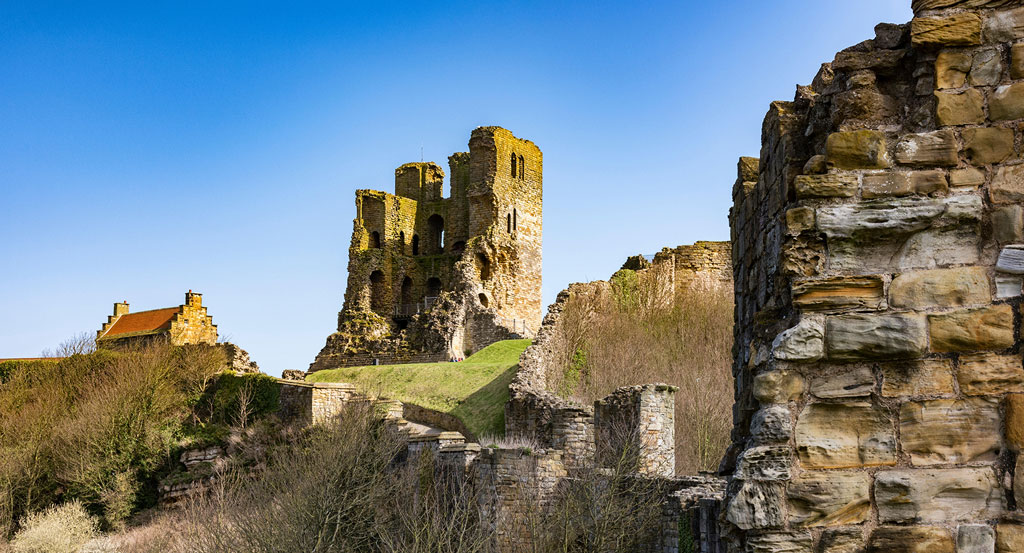
If military history is your thing, the magnificent Scarborough Castle has seen plenty of action. The former medieval royal fortress was built by Henry II, besieged twice in the Civil War, and also came under attack in the First World War. Dating back 3,000 years, the site was once home to an Iron Age Fort, a Roman occupation, and a Viking settlement too.
The castle is not only rich in history, but it affords visitors stunning views over Scarborough, England’s first seaside resort. Other Scarborough gems worth visiting are the Rotunda Museum and the oriental-themed Peasholm Park, one of Britain’s best green spaces and home of the Naval Warfare, a war re-enactment with model battleships on the park’s lake.
RAVEN HALL
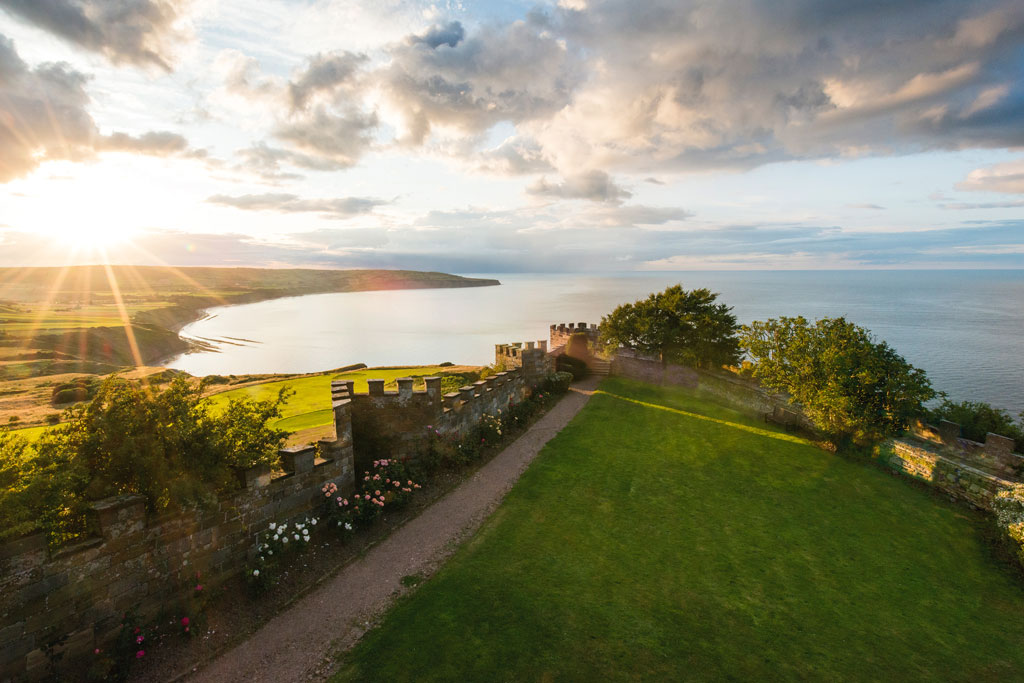
Founded in 1774, the Raven Hall Country House and Hotel in Ravenscar was once owned by King George III’s physician and supposedly housed the monarch himself during his famed bouts of madness. The elegant historic house has 55 en-suite rooms and is situated 600 feet above sea level, offering guests rather dramatic views across Robin Hood’s Bay.
Raven Hall is ideally placed between Whitby and Scarborough, while visitors can also explore the archaeological remains of Ravenscar Alum Works, where alum was quarried for dyeing and tanning.
ROBIN HOOD’S BAY
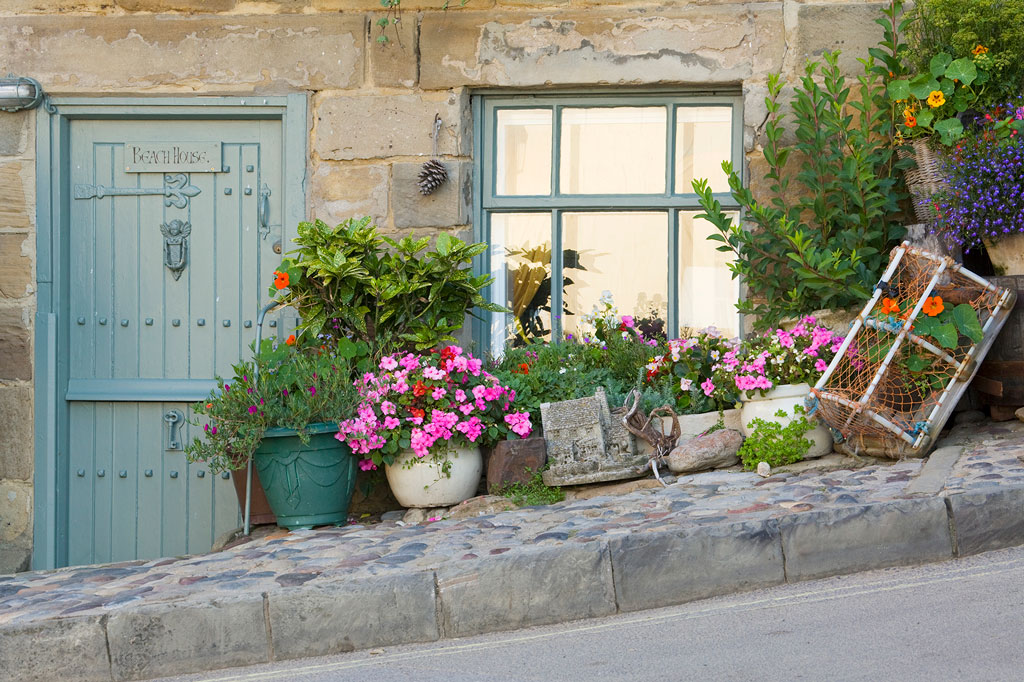
According to legend, folk hero Robin Hood stopped pirates who were looting the village of what is now known as Robin Hood’s Bay. While there’s no hard evidence for this, the story adds to the charm of this idyllic fishing village – and explains the name.
What we do know for sure is that during the 18th century, the bay was a hotspot for smugglers sneaking in gin, brandy, tea, tobacco and French lace to sell on the black market. When walking through the village’s maze of twisted, cobbled streets, you can imagine just how easy it would have been to get away with such business without being noticed. For a fuller picture, visit the Robin Hood’s Bay Museum to see a replica smuggler’s house with its trap doors and hidden cupboards.
SPURN POINT
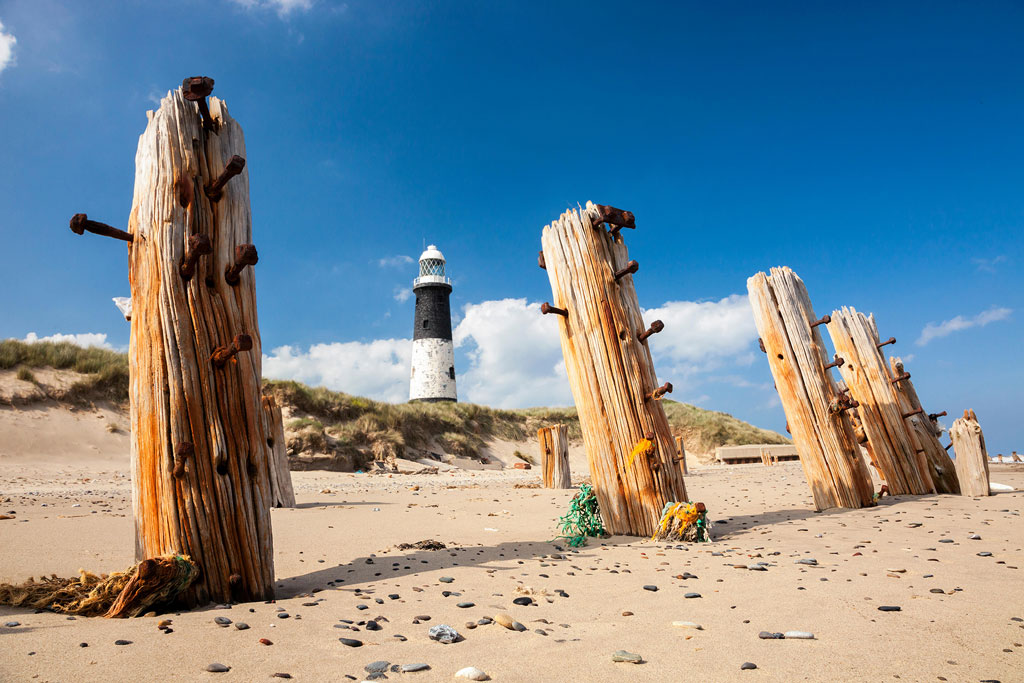
This striking 3.5-mile long nature reserve, owned by the Yorkshire Wildlife Trust, is a long sandy spit that stretches out into the Humber Estuary. Spurn Safaris offer visitors, who are otherwise only able to see the reserve by foot or bicycle, the chance to take a guided tour of the area in a 4×4, including the Discovery Centre and restored lighthouse.
Spurn Point is one of the best migration sites and a wildlife haven for dragonflies, butterflies and roe deer, especially when wildflowers bloom in the spring. This stretch of the Yorkshire Coast is nicknamed “the Dinosaur coast” on account of the world-class geology, and so fossil hunting is particularly popular at the reserve.

